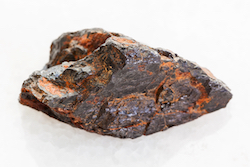Examining dyeing methods for silk tapestries
An interdisciplinary consortium of conservation scientists, curators and scientists has collaborated together in an attempt to preserve historic tapestries and provide markers of physiochemical change and damage assessment. The optimum future preservation of these delicate materials is a major concern. Thus, model and historic samples have been characterised via an approach that incorporates chemicals and materials with a scientific method. For the preparation of dyed silk model tapestries, traditional dyeing methods were taken from a mid-sixteenth century Italian treatise. Instructions for treating silk with alum and iron and dyeing with various biological sources of dye were construed and converted to metric units. Additionally, to dye silk red with cochineal, information from an early seventeenth century European treatise was used. In order to assure that the proper biological source was used for the models, verification was undertaken. This was done through the analysis of test samples and dyes with good performance liquid chromatography with photodiode array detection. The references were necessary to identify the dye sources of the historic samples and to model the ageing behaviour of tapestry materials. Their value as criteria can be utilised in the exchange of expertise for developing a dye analysis strategy for heritage textiles in the future.







